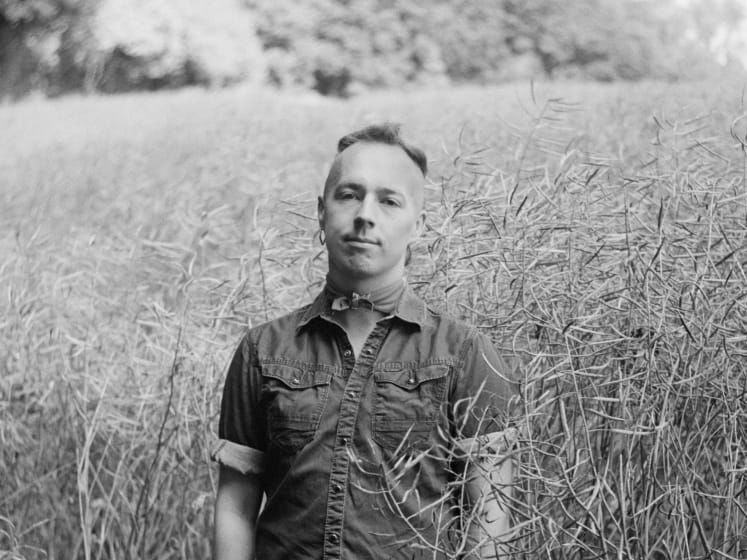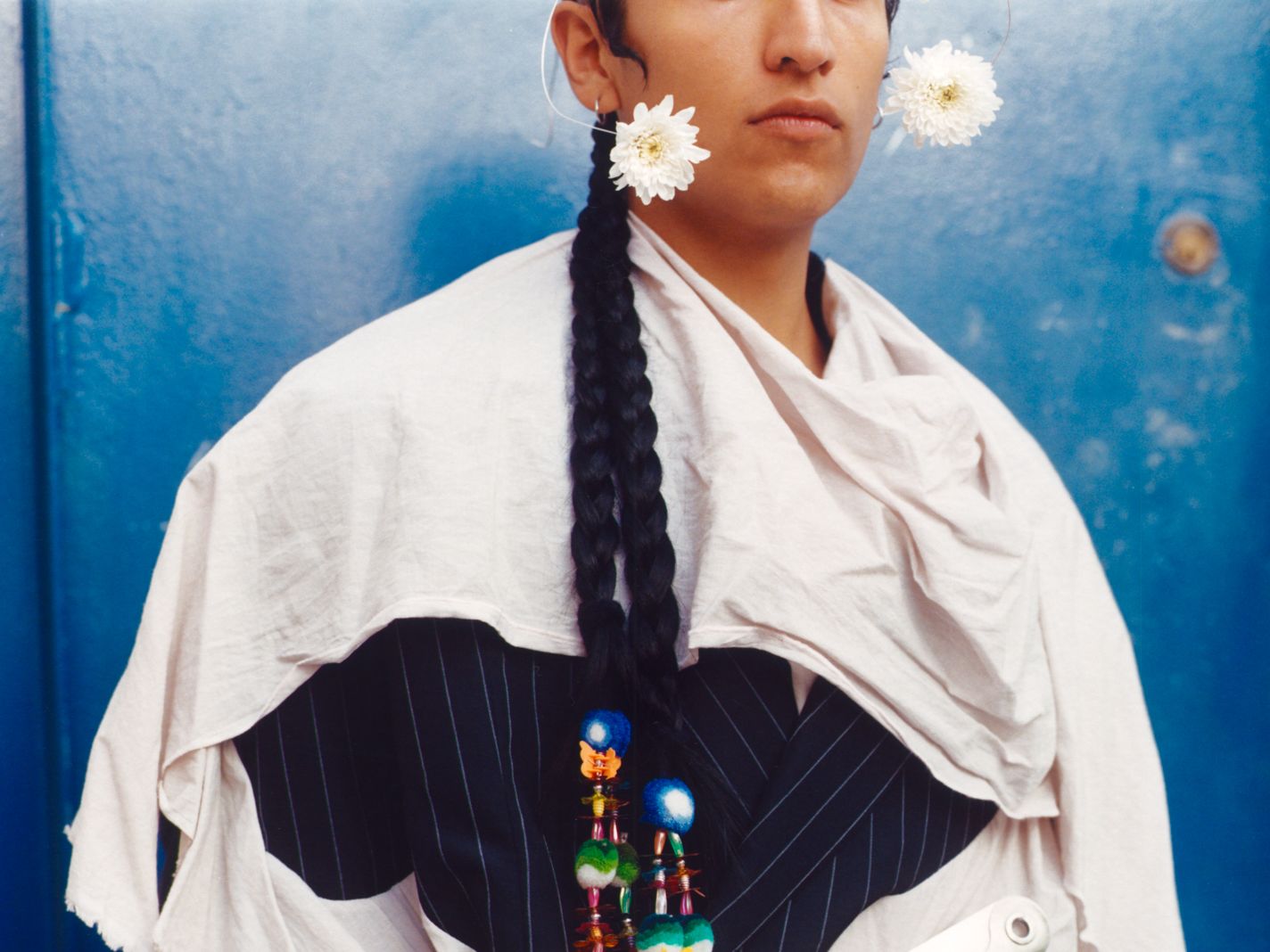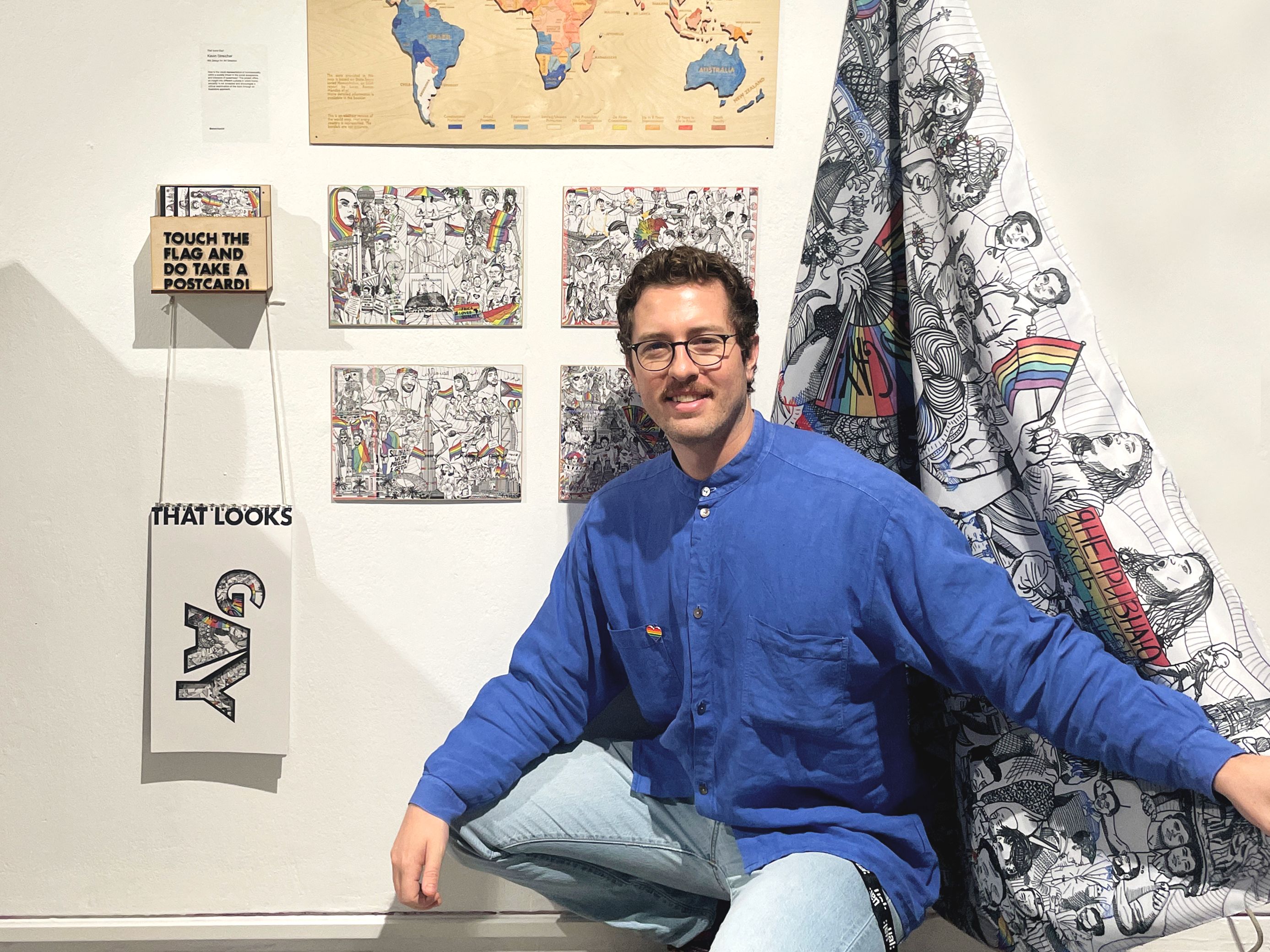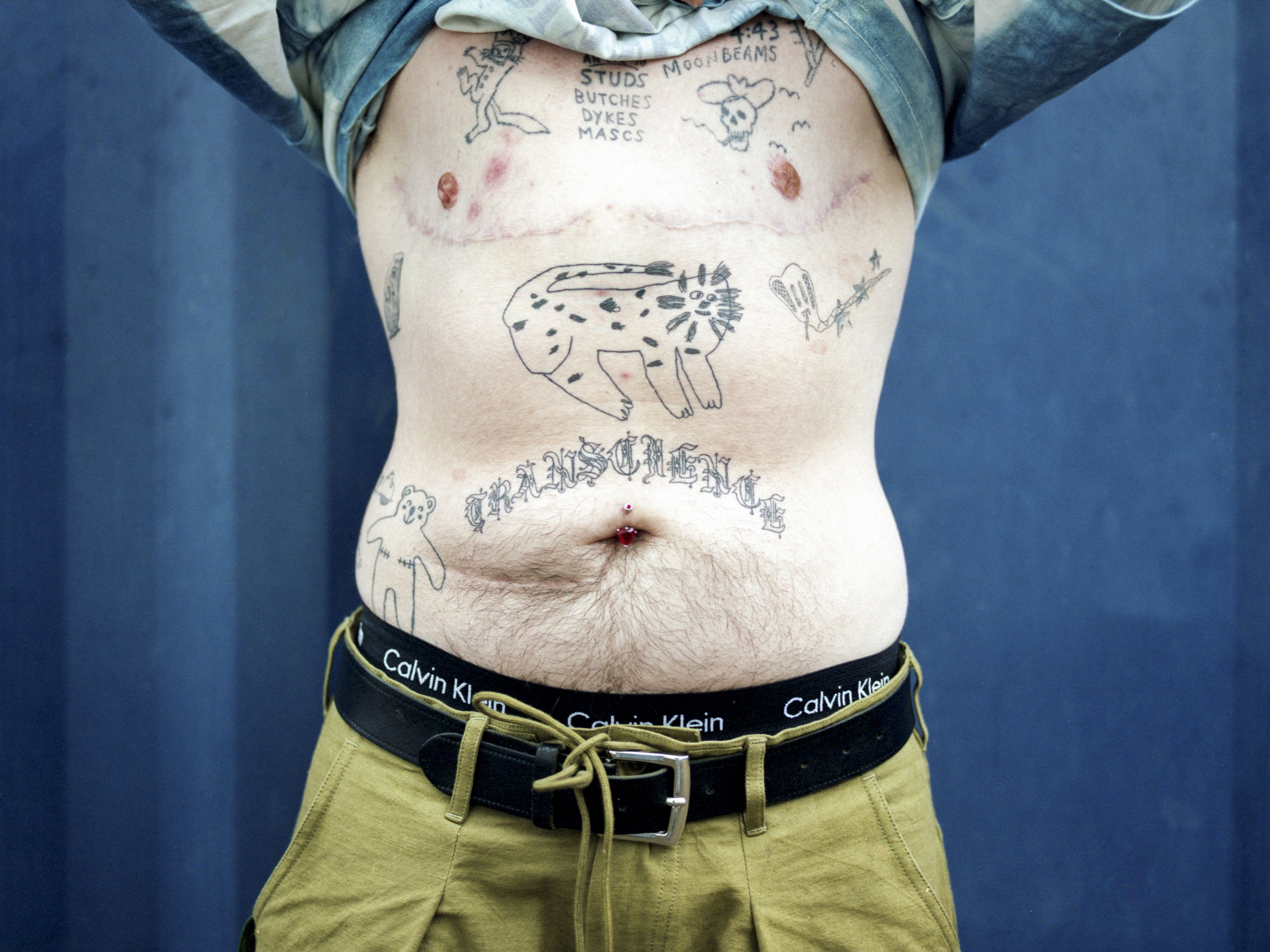
LGBTQ+ month: Felix Pilgrim redefines perceptions of being "Queer in the Country"

- Written byNayantara Kerkar
- Published date 29 February 2024

We caught up with MA Photojournalism and Documentary Photography graduate, Felix Pilgrim, to discuss his project ‘Queer in the Country’. The project documents queer people living in rural areas, challenging the narrative that the countryside is narrow-minded or intolerant.

I came across your project ‘Queer in the Country’ on UAL Showcase. I was really interested about how it documents the experiences of queer individuals in rural areas. What made you want to document this?
Historically, the representation of LGBTQ+ experiences has emphasised individuals and groups of people residing in cities. Consequently, the countryside is often perceived as socially conservative and potentially hostile towards queer people. I aimed to explore the nuances of how a place influences identity and sought to connect with individuals whose identities might not conform to urbanised notions of queerness. Additionally, I spent two years living in rural Somerset before delving into photography and experienced a sense of isolation, being both queer and residing in the countryside. Therefore, my project is partly autobiographical and raises questions about whether the so-called ‘LGBTQ+ community’ can manifest for individuals who are geographically distanced from one another.

Do you feel that ‘Queer in the Country’ responds to the historical struggles and achievements of the LGBTQ+ community?
I hope so! On a basic level, 'Queer' is still a relatively new identity term. Thanks are owed to groups like 'Queer Nation,' the HIV/AIDS activist group based in New York City, and the cultural critics of the 1990s for reshaping how people think and use the word. I am mindful that, for some, including some of the older individuals I photographed, the term is still not easy to use due to its history as a homophobic slur.
My project is also inspired by Francis Lee’s 2017 film, 'God’s Own Country.' It is one of the most prominent films of recent years telling the story of rural gay characters, and it has a happy ending. Lee's film focuses on gay farmers and in researching my project, I came across the Gay Farmer's Helpline, set up in 2010 by Keith Ineson to support farmers who might find it difficult to be open about their sexuality for various reasons. I interviewed over thirty people for this project. What became clear was that factors like location and profession might affect people's ability to be consistently open about their identity.
The series highlights queer individuals who choose to embrace their identities in rural areas. Are there historic LGBTQ+ figures or contemporary individuals who have paved the way for such visibility and acceptance, and how have they influenced your work?
There are plenty of historic LGBTQ+ figures who have influenced my interest in rural queer life. For example, the ‘Ladies of Llangollen’ lived together as a couple from the 1780s to the early 1800s. There's also the gender-nonconforming Anne Lister, known as 'Gentleman Jack,' recognised as one of the first modern lesbians. Edward Carpenter, a Victorian poet and philosopher, played a key role in promoting gay rights and popularized the phrase "The Simple Life." In 1883, he built a house for himself and his male partner called Millthorpe in rural Derbyshire. The Bloomsbury Group, living in Charleston Farmhouse (photographed in my project) in East Sussex, embraced a more bohemian way of living. It's worth noting that the wealth, race, and class privileges of these figures may have made it easier for them to embrace alternative ways of living at the time.
A contemporary queer figure I photographed for this project was River Medway from series 3 of RuPaul's Drag Race UK. Naming themselves after their hometown in Kent is brilliant, and River told me they’ve never felt the need to move to London full-time or change their drag to fit the tastes of an exclusively urban audience. River showed me around Rochester and Chatham, pointing out the small local bar where they first performed in drag. Opposite was the studio of Konstanty Mvrzynski, a couture fashion designer whose outfits River regularly wears. Thanks to this experience, I realised that the visibility and acceptance of queerness and queer expression can very much still occur away from metropolitan cities.

Considering your background in MA Photojournalism and Documentary Photography at LCC, how has your academic journey influenced the thematic choices and storytelling in this project focused on rural LGBTQ+ experiences?
The MA taught me that the presentation medium significantly affects how a project is received. 'Queer in the Country' made most sense as a book due to my interest in landscapes, travel-guides, and mapping the existence of under-represented people. Theoretical insights from writers like Tina M. Campt and Julian Stallabrass helped me consider the photographer's relationship with the subject and negotiate power dynamics sensitively. Influential photographers like Justine Kurland and Tyler Mitchell use theatricality and artifice to reveal truths about subjects. Ingrid Pollard’s 1988 series ‘Pastoral Interlude’ influenced me, exploring feeling othered in rural England. My tutor, Jermaine Francis, created 'A Storied Ground' in 2022, using montage to ponder the absence of the Black figure in the English pastoral landscape. Experimenting with montage and archival photography is something I want to explore further.
In your exploration of non-urban queer narratives, could you share any challenges or triumphs you've encountered during the documentation process?
The countryside is an ideologically complex space. Documenting it without becoming overly idealised or sentimental is challenging. Creating a project centered around representation and identity-politics doesn't always allow representation of everyone all the time. The Traveller community, historically linked with rural landscapes, is explored in a moving BBC documentary, "Cherry Valentine: Gypsy Queen and Proud," by the late George Ward. Building a dialogue with queer individuals from other marginalised groups is complex, requiring trust and time.
I created this project during the changeable weather of summer 2023. I'm pleased I managed to photograph outside on non-rainy days! Some people I photographed lived far from train stations. I spent much time cycling with a backpack filled with camera equipment to meet them—a challenging yet enjoyable traveling experience.

How has your practice evolved since completing this project, and can you share any details on any recent or upcoming projects?
The sequencing and layout of this project were determined by my desire for it to be in the form of a book. Learning to make an entire hardcover book from scratch was incredibly rewarding. Thanks to the staff members in Book Arts, I could achieve it. I also had to grasp InDesign, and the staff in The Digital Space were incredibly patient, teaching me how to use it properly. This means I've learned many new skills for my future practice.
I recently worked with Gay Times, photographing Daisy and Bean, a queer-owned bakeshop in Bath. They provide resources for local queer people, showcasing thriving queer-inclusive spaces beyond Bristol and Exeter in the South West. In Huck Magazine's January edition, you’ll find my photo essay about Polari, a gay slang language used in Soho and the East End from the 19th to 20th centuries, popularised by Kenneth Williams in the 1960s.
You can buy a limited-edition copy of ‘Queer in the Country’ at Gay’s The Word bookshop near King’s Cross.
Find out more about our LGBTQ+ history month interviews:
Read our interview with LCC graduate Kevin Streicher
Learn more about the 'power of collaborative art' with Caroline Glover
Find out more about our interview with CSM graduate Cayetano García Sahurie



